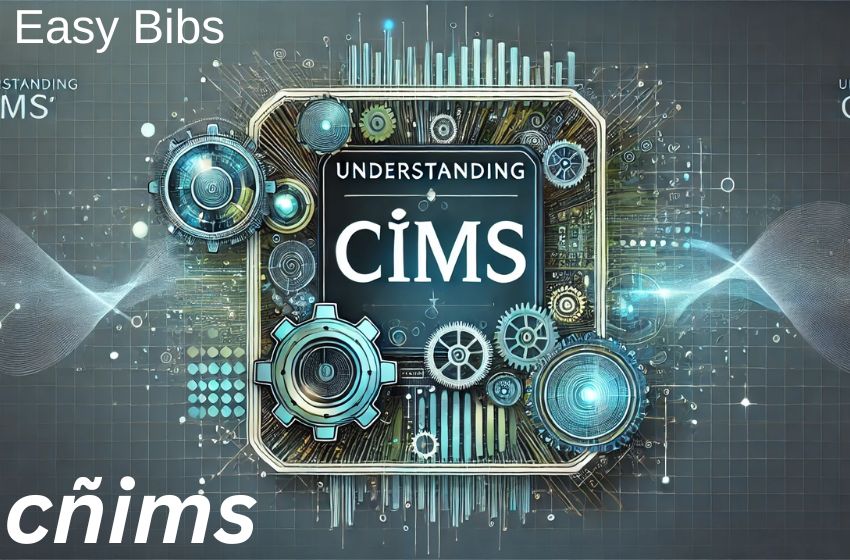Cñims is a term that has been gaining traction in various industries, and its applications are proving to be diverse and valuable. This article will delve into what cñims is, how it functions, its key features, and the benefits it offers. We will also explore potential challenges associated with cñims and provide a comprehensive overview of its relevance in the modern world. Whether you’re a seasoned professional or just curious about cñims, this guide will provide the insights you need.
What is Cñims?
Cñims is a multifaceted concept or tool that serves a variety of purposes, depending on its context. Though specifics about cñims can vary, it is generally understood to be a system or methodology designed to streamline processes, enhance efficiency, or provide unique solutions to common problems. The term “cñims” itself may encompass technologies, strategies, or innovative approaches that are adaptable to different scenarios. For those new to the term, understanding cñims can open up new avenues for optimizing operations, whether in business, technology, or personal management.
Key Features of Cñims
One of the standout features of cñims is its adaptability. Cñims can be tailored to meet the specific needs of different users or industries. This flexibility is a significant advantage, allowing cñims to be integrated into various workflows with minimal disruption. Additionally, cñims often incorporates advanced technology or novel methodologies, making it a cutting-edge solution that keeps pace with modern demands. Key characteristics of cñims typically include user-friendliness, scalability, and the ability to deliver measurable results quickly.
The Benefits of Implementing Cñims
Implementing cñims can bring a host of benefits, which is why it is becoming an increasingly popular choice for businesses and individuals alike. Firstly, cñims can lead to significant time savings by automating repetitive tasks or optimizing existing processes. This efficiency boost can free up valuable resources that can be redirected toward more strategic activities. Secondly, cñims often enhances accuracy and reduces errors, which is particularly beneficial in fields where precision is critical. Lastly, cñims can provide valuable insights through data analysis or feedback mechanisms, helping users make informed decisions that drive success.
Challenges and Considerations with Cñims
While the advantages of cñims are numerous, it’s important to be aware of potential challenges. One common issue that users might face is the initial learning curve associated with adopting cñims. Depending on the complexity of the system, users may need time and training to fully understand how to leverage its features effectively. Additionally, like any tool or system, cñims requires regular updates and maintenance to ensure it continues to perform optimally. It’s also crucial to consider the compatibility of cñims with existing systems to avoid any integration issues.
Cñims in the Industry: Where It Stands Today
Cñims is making waves across various sectors, from technology and healthcare to education and beyond. Its ability to adapt to different needs makes it a valuable asset in industries that demand flexibility and innovation. For example, in the business world, cñims might be used to enhance customer relationship management, streamline supply chains, or improve project management. In healthcare, cñims could play a role in patient data management, diagnostics, or even treatment planning. The widespread applicability of cñims underscores its potential as a transformative tool.
How to Get Started with Cñims
If you’re interested in exploring cñims further, the first step is to identify the specific areas where it could be most beneficial. Assess your current systems and processes to pinpoint any inefficiencies or challenges that cñims could address. From there, you can begin researching different cñims solutions that align with your needs. It’s advisable to start with a pilot program or small-scale implementation to test the waters and make any necessary adjustments before a full rollout. Additionally, leveraging resources like Easy Bibs, which offers insights and guidance on various tools including cñims, can be an invaluable part of your journey.
Future Trends and Developments in Cñims
The evolution of cñims shows no signs of slowing down. As technology continues to advance, we can expect cñims to become even more sophisticated, with enhanced capabilities and broader applications. Future developments might include the integration of artificial intelligence, machine learning, or other cutting-edge technologies that further expand what cñims can achieve. Staying informed about these trends will be key to maximizing the benefits of cñims. Easy Bibs frequently covers updates and innovations in this space, making it a go-to resource for keeping up with the latest in cñims.
Conclusion
Cñims is not just a buzzword; it represents a versatile and powerful approach to solving problems and optimizing performance. By understanding what cñims is, recognizing its benefits, and staying aware of potential challenges, you can make informed decisions about how to integrate cñims into your operations. Whether you’re in business, healthcare, technology, or any other field, cñims offers a pathway to enhanced efficiency, accuracy, and overall success. For ongoing insights and detailed guides, Easy Bibs remains a trusted source to navigate the ever-evolving landscape of cñims.


